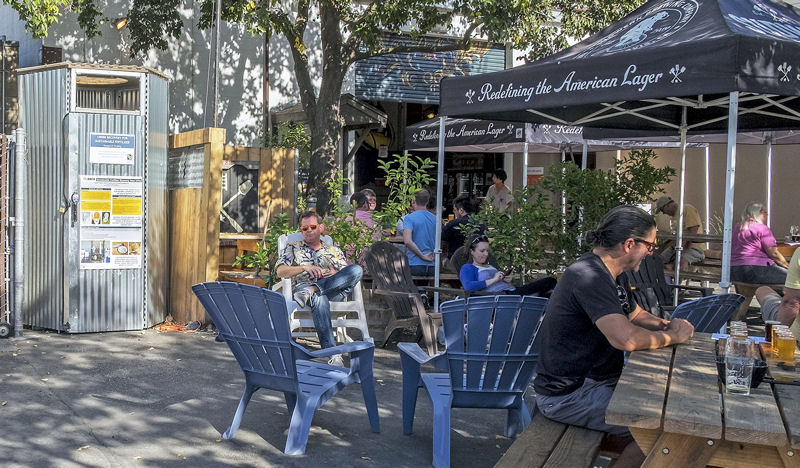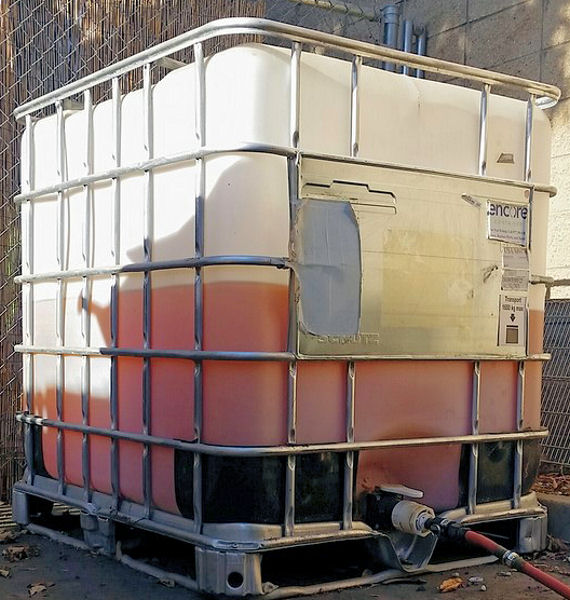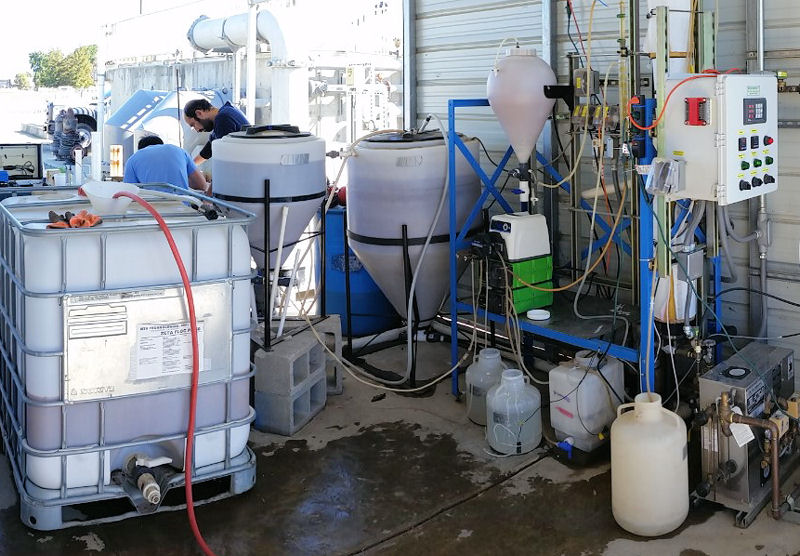
While Sudwerk Brewery (Davis, Calif.) also features classic indoor restrooms, patrons who choose to use the Pee Hive receive a $1 discount on their purchases in addition to the knowledge that they are contributing to science. Photo courtesy of George Tchobanoglous, University of California, Davis.
University of California, Davis (UCD) researchers are thinking outside of the box, using urine collected in the community to develop a more environmentally friendly fertilizer.
Harold Leverenz, lecturer and project scientist for the civil and environmental engineering program at UCD, works with his research team to create all-natural, locally sourced fertilizers. His unique process, which offers significant energy and water savings over traditional fertilizer production methods, collects high amounts of plant nutrients from an unlikely source — the urine from customers of a local brewery.
Through a unique partnership with Sudwerk Brewery (Davis, Calif.) and generous donations from project contributors, Leverenz and his team have secured about 132 L (35 gal) of nitrogen- and phosphorous-rich urine each week since installing a specialized outhouse made from a sawed-off beer keg outside Sudwerk’s tasting room in June. Leverenz is hopeful that the collection rate will increase as UCD students settle into a new school year.

A 946 L (250 gal) collection tank, which receives urine from the Pee Hive via pump, must be emptied and reset weekly. To reduce odor, the tank is cleaned with vinegar regularly. Photo courtesy of Leverenz, University of California, Davis.
The lavatory, colorfully dubbed the “Pee Hive,” directs deposits from beer drinkers into a 946 L (250 gal) collection tank. Periodically, Leverenz and team use a forklift and pickup truck to transport the tank to the nearby UCD wastewater treatment site, which houses a prototype urine-processing technology with the potential to treat up to about 378 L/d (100 gal/d) of urine. The facility also features an oxidation ditch, clarifiers, filters, and an ultraviolet disinfection system.
First, researchers use bacterial enzymes to convert urea into ammonia. Then, steam evaporates the ammonia before it re-condenses into ammonium carbonate, a main ingredient in nitrogen fertilizer. The team mixes Epsom salt into the sample to recover remaining phosphate. Usually, nitrogen that is released naturally into the air as a byproduct of wastewater treatment is used to create fertilizer. Instead, the UCD team’s prototype can cut out extra steps by preventing the exposure of nitrogen to open air, capturing it before it ever reaches the atmosphere.
“While the process has been found to be effective, recovering greater than 95% of ammonium and phosphate, there are questions remaining about what the overall value of the process would be,” Leverenz said.

The prototype urine-processing system at the University of California, Davis, uses steam distillation and other chemical processes to clear away any impurities associated with using urine. Photo courtesy of Leverenz, University of California, Davis.
Between reductions in overhead expenses for wastewater treatment systems and revenue from the sale of fertilizer products, Leverenz estimates that typical commercial buildings with onsite water recycling systems can stand to save up to 20% of life-cycle costs by instituting their own Pee Hives and urine processing systems.
The Pee Hive, which has attracted more than a few curious looks from Sudwerk customers, has the potential to eliminate up to 80% of nitrogen and 60% of phosphorous from wastewater if similar urine-diverting toilets are more broadly adopted, the team contends in an informational poster on the outhouse door. In addition to benefiting developing countries without sophisticated sanitation systems, the practice of urine recycling also could be of interest to builders of green infrastructure as a means of reducing waste.
Leverenz is already working with local farmers and experimenting with his process in an attempt to create the most efficient and broadly applicable fertilizer possible.
“The City of Davis and the UCD community have a long history of working towards and supporting sustainability. This project fits within that sustainable framework and is therefore well-received,” Leverenz said.
— Justin Jacques, WEF Highlights








November 11, 2016
Featured